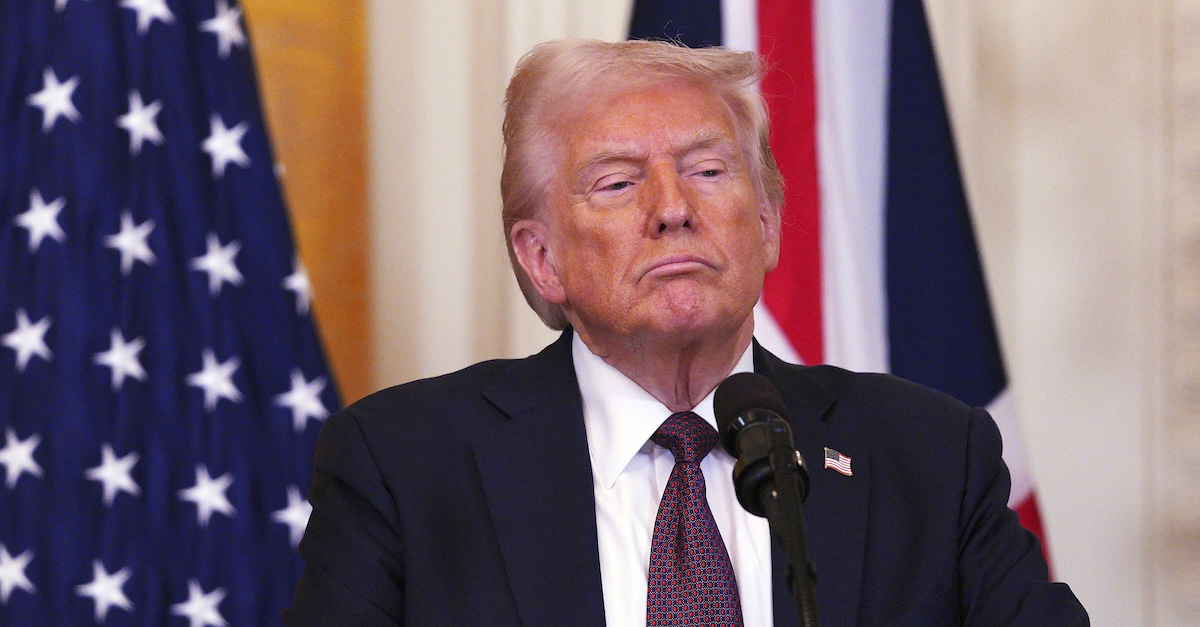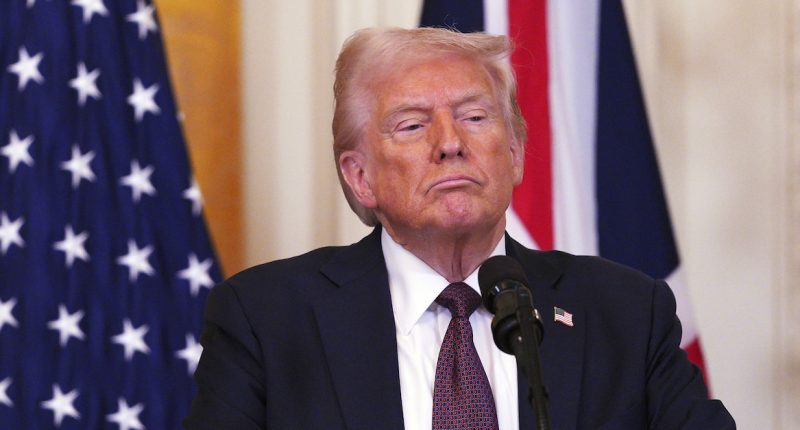
U.S. President Donald Trump speaks during a joint press conference with Britain’s Prime Minister Keir Starmer in the East Room at the White House Thursday, Feb. 27, 2025, in Washington (Carl Court/Pool Photo via AP).
A federal judge on Tuesday reinstated, for the foreseeable future, a member of the Merit Systems Protection Board after she sued to regain her position following her removal by President Donald Trump.
On Feb. 10, the 45th and 47th president tried to fire Cathy Harris, a Joe Biden appointee whose term expires in 2028, in an email from an assistant, telling her she was “terminated, effective immediately.”
But under the federal law governing the decades-old civil service employee dispute agency, early termination requires quite a bit more than just a “conclusory” notice of dismissal, a court determined.
In a 35-page memorandum opinion, U.S. District Judge Rudolph Contreras, a Barack Obama appointee, ruled firmly in Harris’ favor by granting her a preliminary injunction. The decision is based on a 1935 U.S. Supreme Court case keeping “quasi judicial and quasi legislative” agencies largely insulated from the whims of the president.








